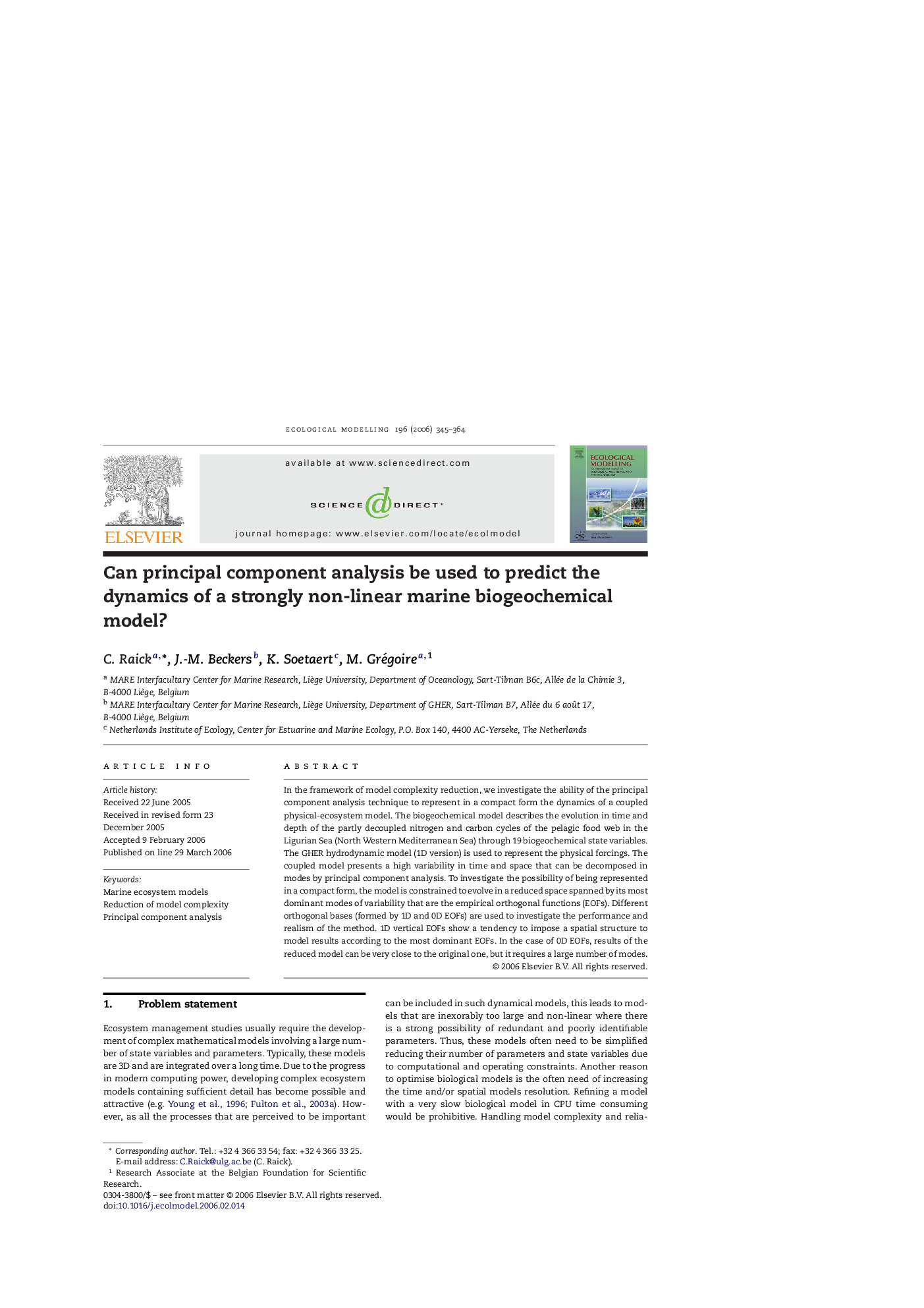| Article ID | Journal | Published Year | Pages | File Type |
|---|---|---|---|---|
| 4379154 | Ecological Modelling | 2006 | 20 Pages |
AbstarctIn the framework of model complexity reduction, we investigate the ability of the principal component analysis technique to represent in a compact form the dynamics of a coupled physical-ecosystem model. The biogeochemical model describes the evolution in time and depth of the partly decoupled nitrogen and carbon cycles of the pelagic food web in the Ligurian Sea (North Western Mediterranean Sea) through 19 biogeochemical state variables. The GHER hydrodynamic model (1D version) is used to represent the physical forcings. The coupled model presents a high variability in time and space that can be decomposed in modes by principal component analysis. To investigate the possibility of being represented in a compact form, the model is constrained to evolve in a reduced space spanned by its most dominant modes of variability that are the empirical orthogonal functions (EOFs). Different orthogonal bases (formed by 1D and 0D EOFs) are used to investigate the performance and realism of the method. 1D vertical EOFs show a tendency to impose a spatial structure to model results according to the most dominant EOFs. In the case of 0D EOFs, results of the reduced model can be very close to the original one, but it requires a large number of modes.
